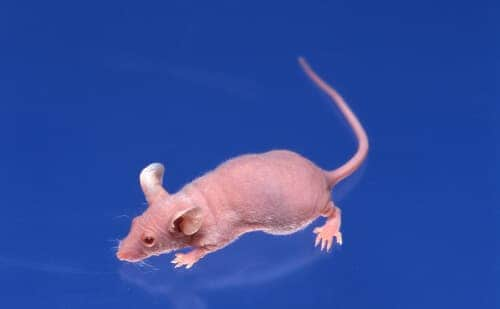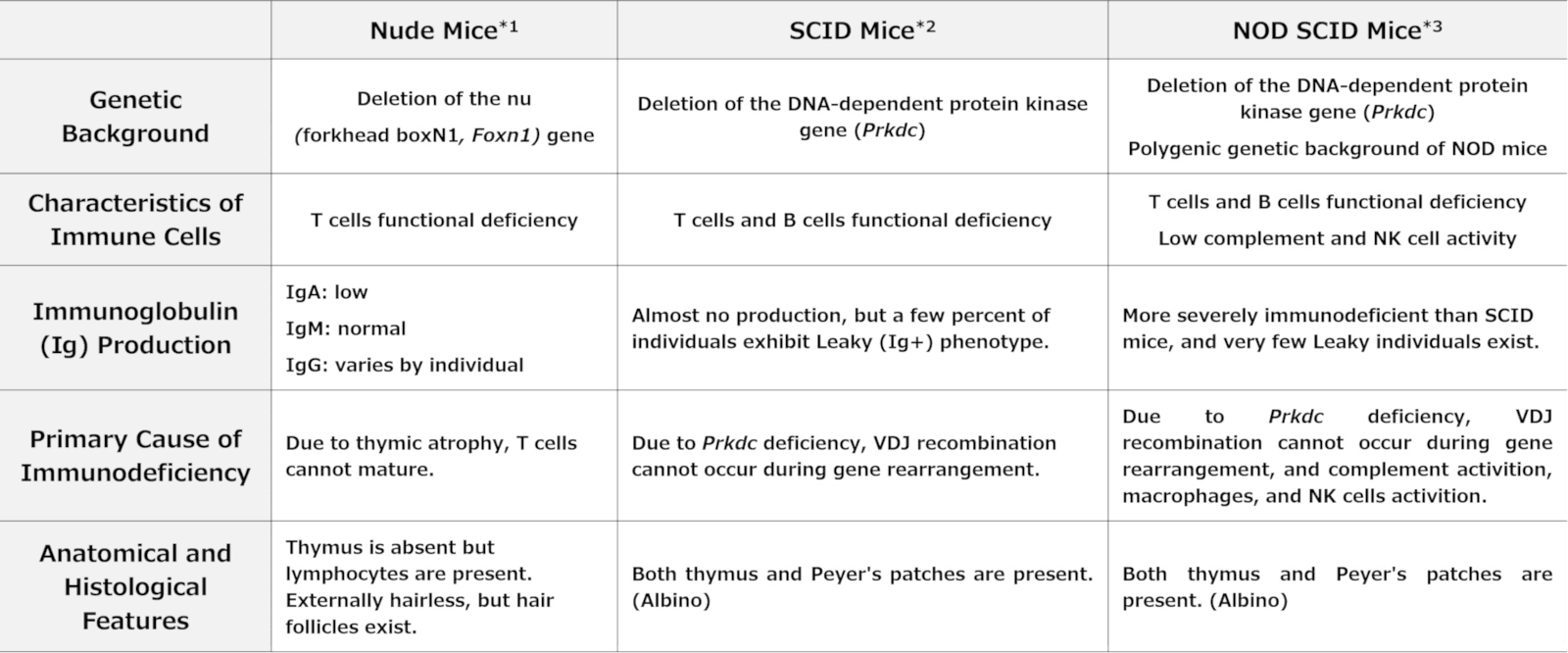BALB/cAJcl-nu/nu
Animals/Immunodeficiency Models/

Ordering name: BALB/cAJcl-nu/nu
Nomenclature: BALB/cAJcl-Foxn1nu
Availability: Live colony
Not genetically modified animal
Characteristics
This is an immunodeficient mouse with a T-cell deficiency due to a defect in the recessive gene nu(forkhead box N1, Foxn1), resulting in an anatomically athymic and phenotypically hairless condition (although histologically, hair follicles are present, and some individuals may develop vellus hair). This phenotype is expressed only in homozygous individuals (nu/nu).Our company supplies genetically and microbiologically stable backcrossed individuals.

※The following are the formal names for each animal in our company:
*1 BALB/cAJcl-nu/nu、 *2 C.B-17/Icr-scid/scidJcl、 *3 NOD/ShiJic-scidJcl
Use
- Various immunological and cancer research
- Anticancer drug screening
- Microbiological research, etc.
Origin

1913: Dr. Bagg maintained a spontaneously mutated albino mouse (called the Bagg Albino). It was later named BALB by Dr. Little.
1923: Brother-sister mating was conducted by Dr. McDowell.
1932: At generation F=36, the strain was passed on to Dr. Snell and became known as BALB/c. Many substrains were subsequently developed, and the one that reached Europe became BALB/cA.
1973: BALB/cA and BALB/cA-nu (nude mice) were introduced to the Institute of Experimental Animals by Dr. C.W. Friis (Denmark).
1980: Production and supply of BALB/cAJcl and BALB/cAJcl-nu/nu began by CLEA Japan.
Rearing management of immunodeficiency models
Microbiological control of immunodeficiency model animals should be managed strictly because of their properties. Due caution is necessary against opportunistic infections with normal inhabitant microorganisms as well as microorganisms that are pathogenic in mice and rats.
- Requiring workers to wear specialized protective clothing that covers all exposed skin and to use respiratory filters.
- Supply of boiled and chlorine-added water and autoclaved diet (CL-2)
- Prevention of falling bacteria using filter caps and handling animals using tweezers or disposable gloves
Our Contract Research Services related with This Animal
For details on our contract research services, including cryopreserved embryos, contracted testing, and the provision of research materials such as blood and organs, please click here .

